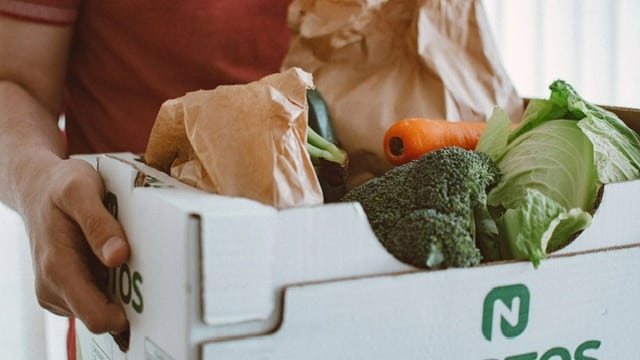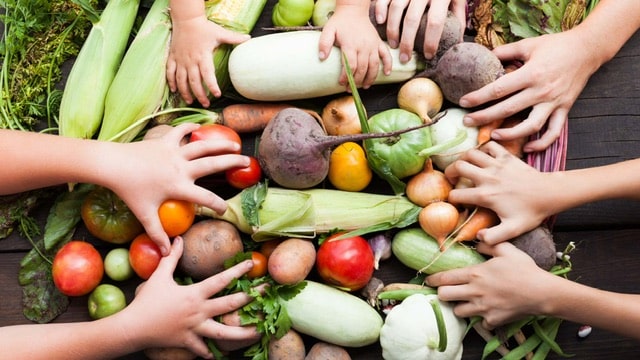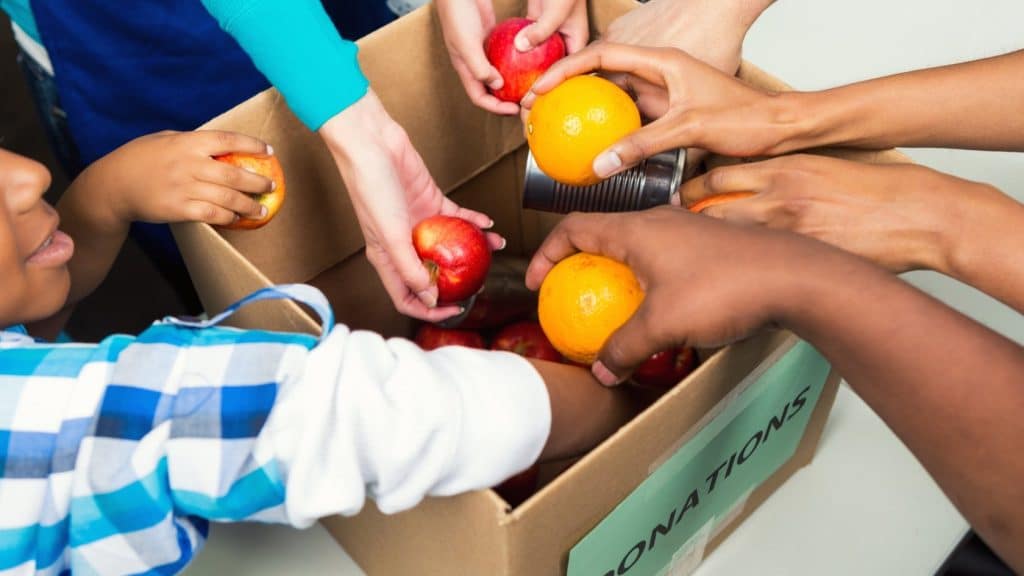Note: This piece was written in 2014. It’s been updated as of April 2022, but the heart of it – the impact of food waste on climate change, remains an important issue. It also remains an important opportunity as each of us can easily find ways to reduce our waste of food.
================
You’re thinking about Earth Day. You might be deeply concerned about the environment – especially the waste stream and global warming. Or you might be very concerned about the waste of food. Here’s a hot tip for Earth Day (and every day!): working to solve food waste also helps to save the planet.
I have a strong suspicion that among all people running nationwide organizations that work to alleviate hunger and malnutrition in America, I’m the only one who is a graduate of an environmental stewards program (from Rutgers University) as well as a town environmental commissioner.
Indeed, as far as I know, AmpleHarvest.org is the only hunger initiative that has a strong environmental component.
Let me ‘splain.
AmpleHarvest.org does help local growers share their excess harvest with a nearby food pantry, so from that perspective, it appears to be a hunger program, yet if you take a step back for a moment, you’ll see that at its heart, AmpleHarvest.org addresses food waste.
We waste a LOT of food.
How much is a LOT?
According to a recent USDA study (updated 2022) with a typically long government name like “The Estimated Amount, Value, and Calories of Postharvest Food Losses at the Retail and Consumer Levels in the United States”, America loses $161 billion worth of food annually – about 31% of our food supply, and a 2012 report from the National Resource Defense Council found 40% of our food, including more than half of our fruit and vegetables, never made it to the dinner table.
These reports, while chock full of data assembled by really good authors, left out the additional food lost by America’s 42 million (now 62 million as of 2022) home gardeners, each of whom can harvest but typically not consume 300 lbs. of food annually. So whatever the actual food loss number is, it is actually higher than the reports indicate.
The fresh food that we don’t consume either ends up composted/tilled under (bad for people but less so for the environment) or is thrown away (bad for both).
Why?
Every pound of produce that is thrown into the trash generates a pound of methane which is equivalent to 20 lbs. of CO2 and thereby contributes to climate change. Additionally, every pound of fresh food that could have gone to a pantry but was instead tossed requires another pound of processed food to be purchased and then shipped in from somewhere else thereby adding to the carbon footprint in the community. Lastly, the can/jar/box it came in also needs to be thrown away, further adding to the waste stream (and in many cases, your local taxes).
Indeed the EPA (updated 2021) considers food waste an environmental hazard.
So where does AmpleHarvest.org fit in this discussion?
When AmpleHarvest.org enables a grower to donate fresh food they couldn’t eat, their donation displaces a similar amount of purchased processed food. This ultimately helps to reduce the carbon footprint, waste stream, and methane emissions in the community. It also saves the pantry money and can be a tax deduction for the donor.
It’s also healthier food.
Most food programs focus on how many pounds of food or how many meals get to people who need it.
We see a bigger picture.
AmpleHarvest.org is the only initiative that is focused on helping both the people as well as the planet. The idea behind our “No Food Left Behind” mantra is that what we have should be consumed by someone.
Whatever we waste is a shame.
Visit AmpleHarvest.org/support to help us expand our green solution to hunger on Earth Day and every day.




